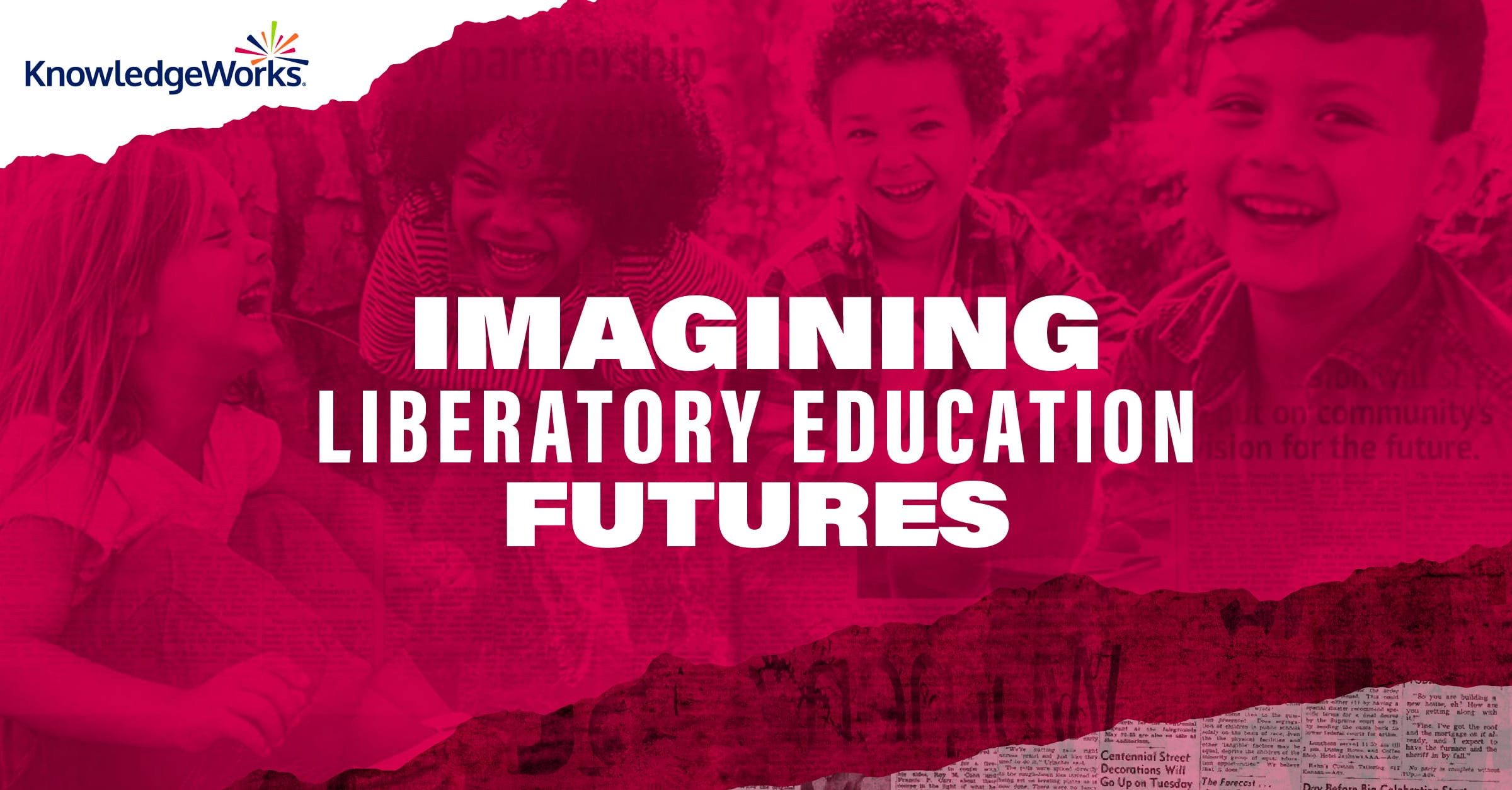Advances in technology feel almost unavoidable when thinking about the future. KnowledgeWorks’ most recent forecast, Imagining Liberatory Education Futures, considers how accelerating technologies, alongside the climate crisis and the fight for just societies, are leading us into a new era characterized by shared, existential challenges.
Accelerating technologies, which include the advancement and proliferation of artificial intelligence (AI); automation; and other digital technologies such as machine learning, robotics and augmented, virtual and extended realties, are reshaping the ways we work and communicate – and even what it means to be human. These technologies are advancing exponentially, meaning that their performance and capabilities are accelerating by leaps and bounds. As a result, they are disrupting industries, creating new ones and transforming many of the systems and sectors that are part and parcel to our lives. Broadly speaking, they have helped decentralize, personalize and streamline many of the products, roles, services and offerings many of us rely on and enjoy.
How one Utah teacher sees that technology shouldn’t be center stage in teaching and learning; rather, the focus should be on state’s innovative frameworks.
Many claim that these technologies are also transforming education. However, in many cases they are only making current education systems operate more smoothly and efficiently. While such outcomes can be viewed as positive, they aren’t necessarily. Thinking from a systems viewpoint, making current systems more efficient helps perpetuate the systems and structures that have been oppressive to learners of color and other historically marginalized yet resilient groups. Simply adding technologies to education systems does not change them in any fundamental way.
For example, COVID-19 sped up the application of digital technologies in education and in doing so highlighted longstanding issues of equitable access to basic resources, including broadband internet and digital devices. While such access is important within the context of current education systems, providing it does not fundamentally change educational structures and systems. Even as more students and families gained access to technology, systemic behaviors – reflected in things such as pedagogies, approaches to assessment, a reliance on age-based cohorts and performance tracking – persisted.
Examining the systems around us will help us understand how injustice and inequity have been able to persist and will help us uncover opportunities to create liberatory education futures. Learn more »
As technologies continue to improve and becomes further intertwined with education, the conversation about their applications, benefits and consequences must go deeper than access. It must take into account how technologies are being leveraged. Careful attention must be paid to the assumptions built into algorithms, adaptive software and other digital tools. Otherwise, such technologies could perpetuate biases, contributing to the marginalization of learners.
In addition to these considerations, the questions below can help when thinking through whether the application of any given technology might be leveraged for efficiency or transformation:
- Does the technology support the co-creation of new approaches to teaching and learning?
- Does the technology help expand the range and kinds of relationships among educators, students and community members?
- Does the technology help shift power dynamics in education?
- Does the technology contribute to the development of inclusive knowledge bases that validate diverse lived experiences?
Stakeholders need to examine the ways in which accelerating technologies could help transform education systems. Being able to distinguish between efficiency and transformation will be a key consideration when thinking about how to apply technologies in education. The first step may be to consider what transformation means in your context; the second, to think through how technology might play a role in bridging your current reality with that transformative future.
Unlock your imagination with our forecast.









